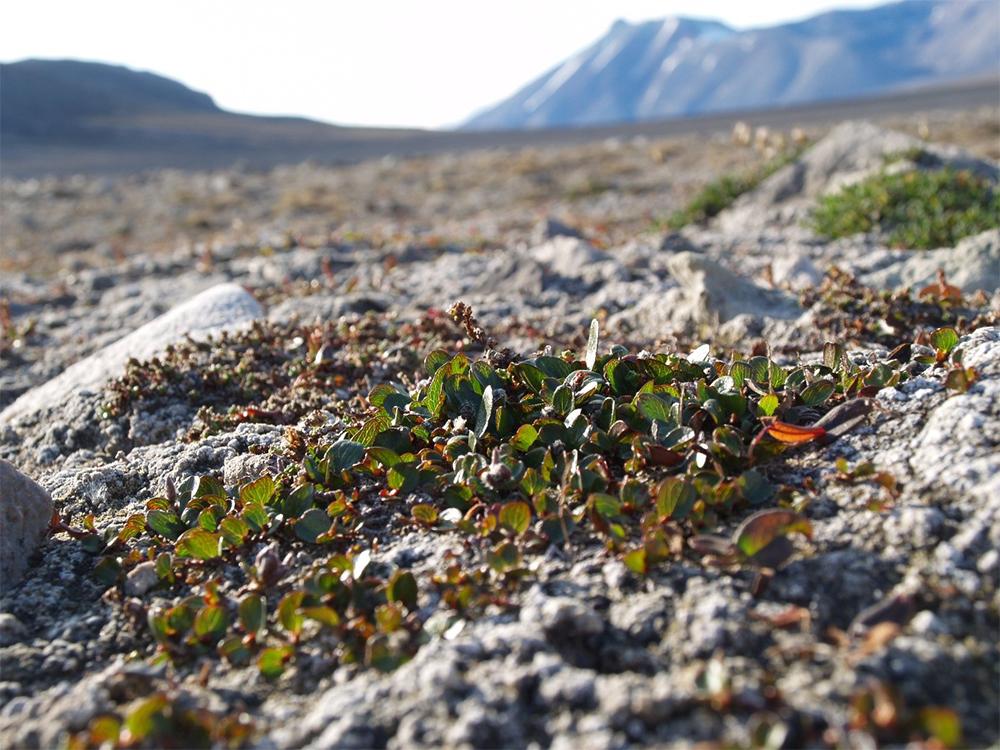Declining Arctic sea ice drives divergent arctic shrub growth

Arctic sea ice has been in steep decline over the last two decades. Meanwhile, tundra shrub abundance has been increasing in many regions of the Arctic. A new study, published in the Proceedings of the National Academy of Sciences of the United States of America, reveals that declining Arctic sea ice extent has been associated with increasing shrub growth in some regions of the Arctic and decreasing growth in other, generally drier, regions.
Arctic shrubs are the most widespread woody plants in the Far North and, like trees in lower latitudes, they form annual growth rings. These rings can be measured under a microscope to reveal the history of the past climates but also growth responses to the recent climate change that is vividly present in the Arctic. An international team from eight countries led by Dr Agata Buchwal from Adam Mickiewicz University in Poznan, Poland and involving Dr Marc Macias-Fauria from Oxford's School of Geography and the Environment, gathered 23 existing shrub-ring chronologies and investigated their relationship to changes in sea ice extent, air temperature and precipitation. Their dataset included birches and willows from Alaska, the Canadian Arctic, Greenland, Svalbard and Siberia. "Our synthesis represents a major collaborative effort to disentangle one of the most complex issues in climate change research: heterogeneity of tundra shrub dynamics across the Arctic," says Buchwal who launched the synthesis during her Fulbright scholarship at the University of Alaska Anchorage in 2015.
While Arctic tundra greening and browning have received increasing attention over the past decade, one comparatively understudied area is the ultimate role of sea ice dynamics and decline as drivers of terrestrial vegetation change and the ecological consequences. Sea ice decline is emerging as a powerful driver of warming and associated precipitation changes across the Arctic, and tundra shrubs are recognized as climatically sensitive proxies of Arctic environmental change. However, sea ice - shrub interactions had not been studied at the Pan-Arctic scale. "The comprehensive assessment reported in our synthesis not only addresses that knowledge gap, but also, more importantly, documents contrasting influences of declining sea ice on summer climate and shrub growth at the biome scale," says Buchwal.
While the majority of shrubs take advantage of warming induced by sea ice decline and increase their growth, there is a remarkable group of shrubs that have progressively decreased their growth during the period of sea ice decline. Buchwal and team have shown that regional changes in sea ice extent are highly coupled with changes in local temperature and moisture availability. Specifically, sites with shrubs that grew less with the declining sea ice extent were characterized by increasingly drier conditions that hampered their growth.
"Through this study we were able to learn how Arctic vegetation has responded to the decrease in sea ice observed over the whole Arctic Ocean. It is astonishing to think that plants growing this far north, in locations where the growing season lasts for only a few weeks and with low summer temperatures, can show signs of drought stress associated with increased aridity. It speaks both of how large the ongoing changes are in the Arctic and of how adapted Arctic plants are to Polar conditions," says Dr Marc Macias-Fauria, "Our results highlight the pronounced growth response heterogeneity across the tundra biome and these will have important implications for tundra productivity and vegetation-climate feedback. With further warming, we can expect an increase in the differences in responses of Arctic vegetation to climate warming, with some benefiting from ameliorated climate, and other regions reducing their growth and hence not conforming to the overall greening trends that have characterized the last decades. Once more, the effect of sea ice on land vegetation demonstrates the strongly interlinked nature of the Earth System", he added.
The implications of increasing heterogeneity in shrub growth responses to sea ice-induced changes in climate might be widespread, with local to global consequences, including carbon uptake potential and albedo effects. "The existence of diverging trends in the response of tundra shrubs to declining sea ice and its associated climate impacts means that we need to be careful in generalizing our predictions on what the Arctic ecosystems will do in the future decades, and calls for further research on the drivers behind a seemingly increasing heterogeneous biome," says Macias-Fauria.
"Tundra shrubs will not announce the effects of climate change in the Arctic. Instead, they patiently record their responses to change in their growth rings. And it is our task to learn from their records," says Buchwal.
Further information
- Buchwal, A., Sullivan, P.F., Macias-Fauria, M., Post, E., Myers-Smith, I.H., Stroeve, J.C., Blok, D., Tape, K.D., Forbes, B.C., Ropars, P., Lévesque, E., Elberling, B., Angers-Blondin, S., Boyle, J.S., Boudreau, S., Boulanger-Lapointe, N., Gamm, C., Hallinger, M., Rachlewicz, G., Young, A., Zetterberg, P. and Welker, J.M. (2020) Divergence of Arctic shrub growth associated with sea ice decline. Proceedings of the National Academy of Sciences, 117(52): 33334-33344.
Declining Arctic sea ice drives divergent arctic shrub growth
While Arctic tundra greening and browning have received increasing attention over the past decade, one comparatively understudied area is the role of sea ice dynamics and decline as drivers of terrestrial vegetation change and the ecological consequences. A new study, published in the Proceedings of the National Academy of Sciences of the United States of America, reveals two important insights that will have important implications for tundra productivity and vegetation-climate feedback. Read in full.




